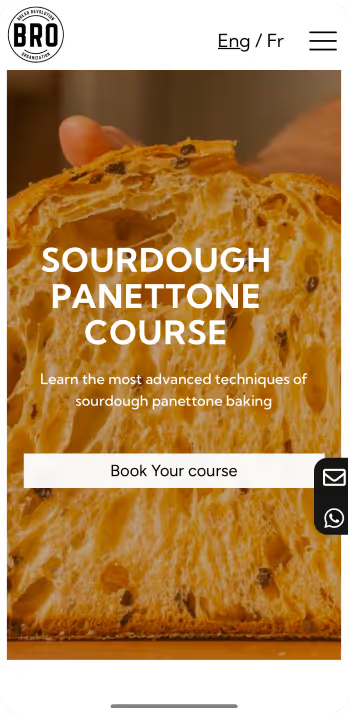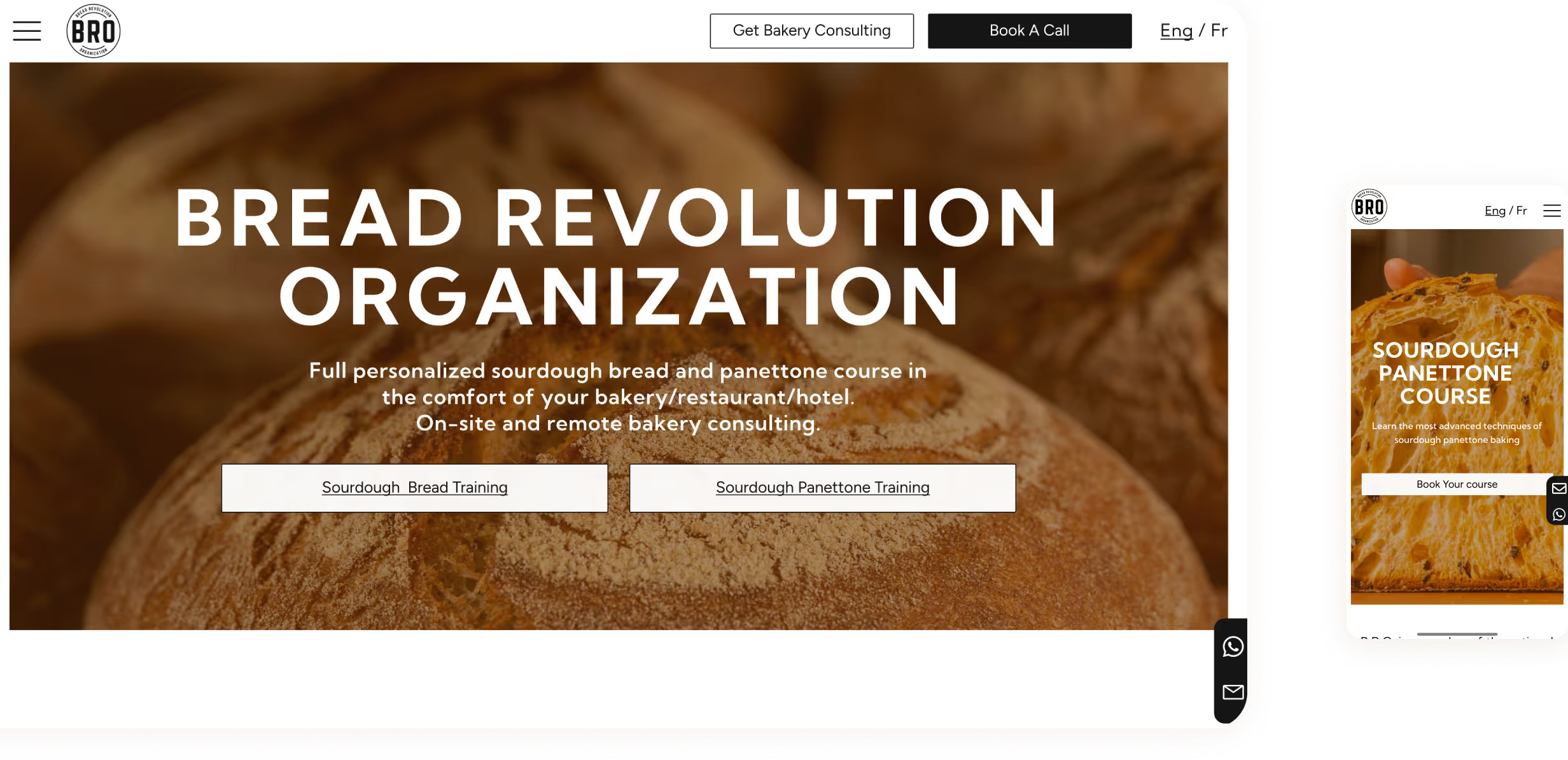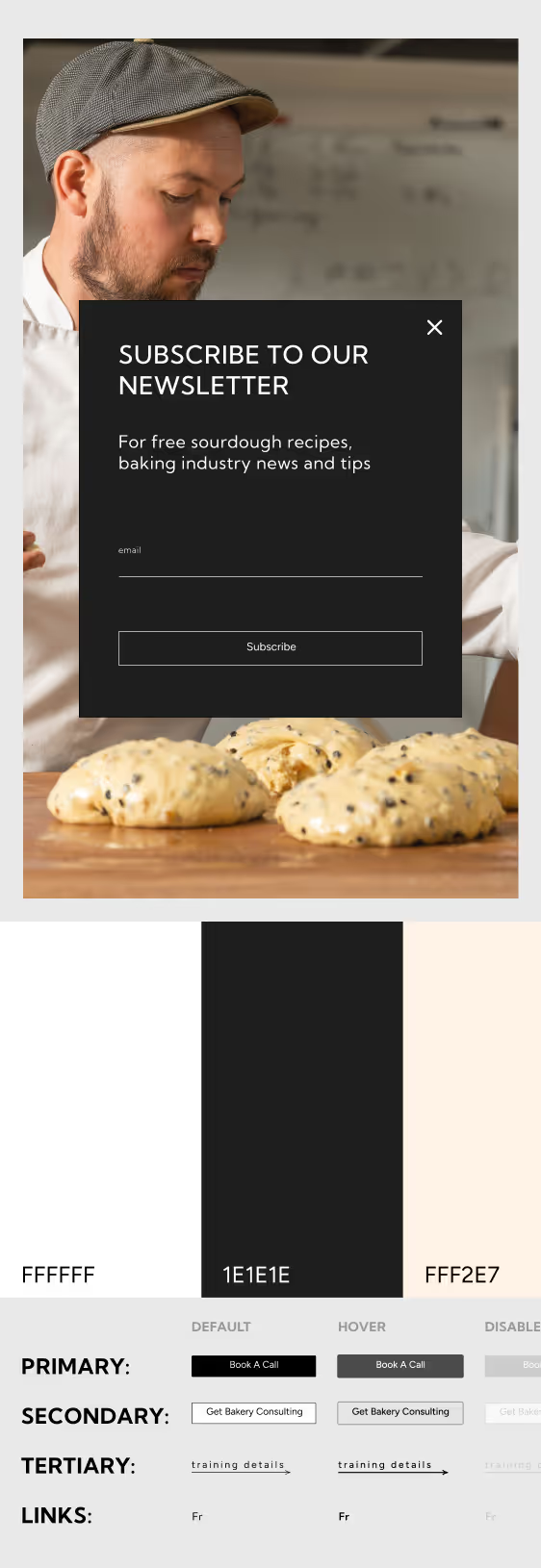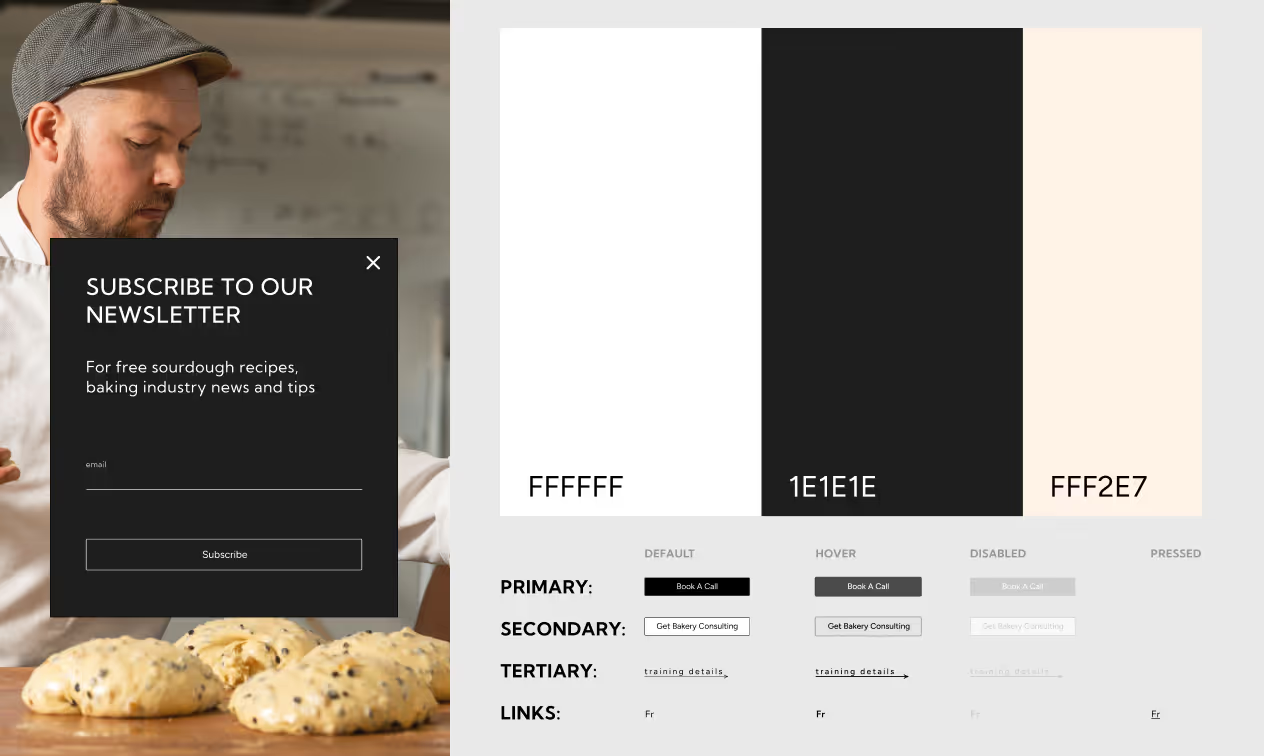When we started working — Milla on the content and me on the visuals — we encountered our first challenge. In most cases, design is a flexible structure where text length can vary, but in this project, the exact word count and use of key search terms were crucial for achieving
business goals and SEO performance. Through testing, we realized that to make the text compact, functional, and engaging rather than overwhelming, the design and marketing processes had to work hand in hand.
As a result, we cut down large portions of text, added new sections, and rethought how to present the product’s benefits — making the narrative more visual and concise. This close collaboration with a marketing specialist not only taught me a lot but also allowed me to directly influence the client’s brand identity.
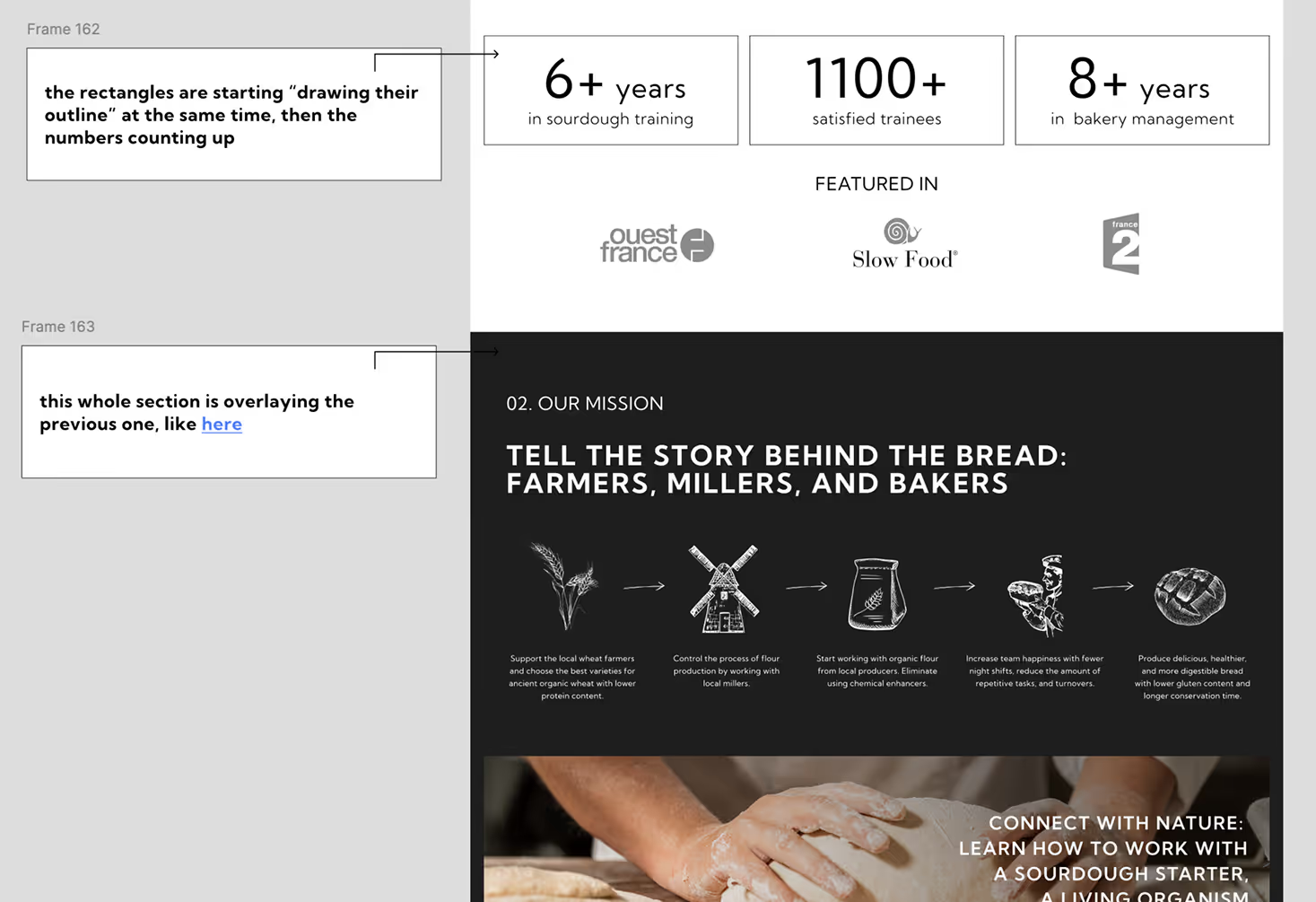
some annotations on the animation for devs
For example, we insisted that the client provide high-quality photos and videos, and also collect authentic testimonials from previous students, including real photos of their baking results.
I consider it a real success that we managed to compile a solid visual bank of the client’s products, as the main highlight of the course was an ancient dough fermentation method and the baking of classic French bread and pastries.
Updating the imagery allowed us to clearly showcase how competitive — and mouthwatering — the final product truly was. Personally, I love baking (and eating bread), so I was genuinely thrilled to curate the best images of panettone and loaves, even though it constantly made me crave pastries while working.
Maximizing design-marketing effort:
→ matching expectations of the results
→ live work to achieve the best match of the visuals and content
Long-term game:
→ creating timeless patterns for the product appearance
→ developing a kit of visual materials for the extended use
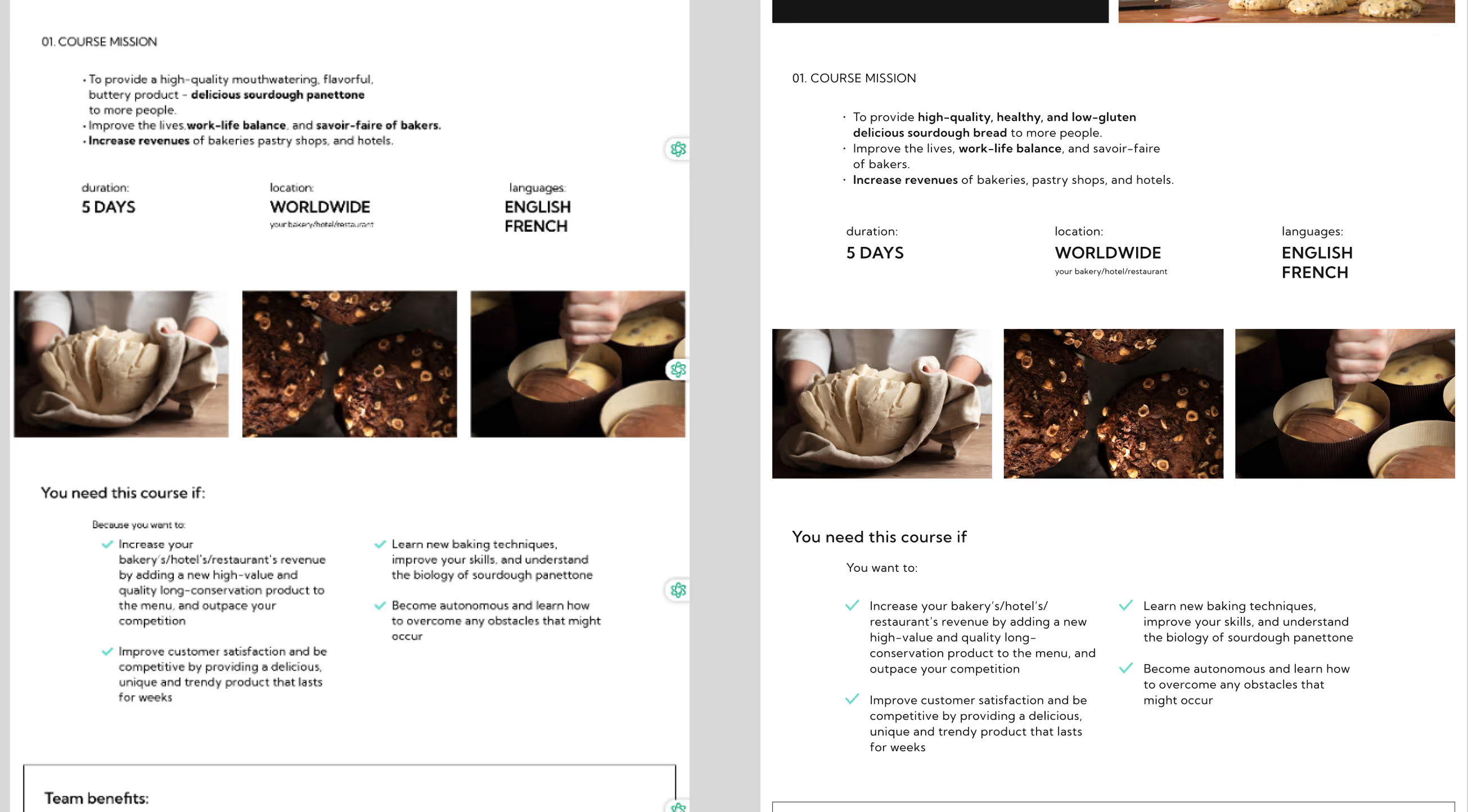
moments from the revisions of the dev work
